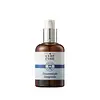What's inside
What's inside
 Key Ingredients
Key Ingredients

 Benefits
Benefits

 Concerns
Concerns

 Ingredients Side-by-side
Ingredients Side-by-side

Water
Skin ConditioningGlycerin
HumectantButylene Glycol
HumectantC15-19 Alkane
SolventSqualane
EmollientCellulose
AbsorbentC20-22 Alkyl Phosphate
EmulsifyingC20-22 Alcohols
Emulsion StabilisingPentylene Glycol
Skin Conditioning1,2-Hexanediol
Skin ConditioningCaprylyl Glycol
EmollientCarnosine
Skin ConditioningPolyacrylate Crosspolymer-6
Emulsion StabilisingMaltodextrin
AbsorbentXanthan Gum
EmulsifyingMannitol
HumectantXylitol
HumectantTocopherol
AntioxidantSalvia Miltiorrhiza Root Extract
Skin ConditioningRhamnose
HumectantBiosaccharide Gum-1
HumectantCitric Acid
BufferingGlycine Soja Oil
EmollientHydrolyzed Hyaluronic Acid
HumectantSodium Hydroxide
BufferingPalmitoyl Tetrapeptide-10
Skin ConditioningWater, Glycerin, Butylene Glycol, C15-19 Alkane, Squalane, Cellulose, C20-22 Alkyl Phosphate, C20-22 Alcohols, Pentylene Glycol, 1,2-Hexanediol, Caprylyl Glycol, Carnosine, Polyacrylate Crosspolymer-6, Maltodextrin, Xanthan Gum, Mannitol, Xylitol, Tocopherol, Salvia Miltiorrhiza Root Extract, Rhamnose, Biosaccharide Gum-1, Citric Acid, Glycine Soja Oil, Hydrolyzed Hyaluronic Acid, Sodium Hydroxide, Palmitoyl Tetrapeptide-10
Water
Skin ConditioningGlycerin
HumectantPentylene Glycol
Skin ConditioningNiacinamide
SmoothingCentella Asiatica Extract
CleansingN-Palmitoyl Serinol
Skin ProtectingBifida Ferment Lysate
Skin ConditioningAcetyl Glucosamine
Skin ConditioningPhytosterols
Skin ConditioningCeramide NP
Skin ConditioningSodium Hyaluronate
HumectantSialyllactose
Skin ConditioningAllantoin
Skin ConditioningPanthenol
Skin ConditioningHypericum Perforatum Flower Extract
Skin ConditioningAdenosine
Skin ConditioningResveratrol
AntioxidantHeptasodium Hexacarboxymethyl Dipeptide-12
Skin ConditioningGlyceryl Acrylate/Acrylic Acid Copolymer
HumectantPolyglyceryl-10 Distearate
EmulsifyingGlyceryl Stearate
EmollientCaprylic/Capric Triglyceride
MaskingSorbitan Stearate
EmulsifyingCarbomer
Emulsion StabilisingStearic Acid
CleansingGlyceryl Caprylate
Emollient1,2-Hexanediol
Skin ConditioningWater, Glycerin, Pentylene Glycol, Niacinamide, Centella Asiatica Extract, N-Palmitoyl Serinol, Bifida Ferment Lysate, Acetyl Glucosamine, Phytosterols, Ceramide NP, Sodium Hyaluronate, Sialyllactose, Allantoin, Panthenol, Hypericum Perforatum Flower Extract, Adenosine, Resveratrol, Heptasodium Hexacarboxymethyl Dipeptide-12, Glyceryl Acrylate/Acrylic Acid Copolymer, Polyglyceryl-10 Distearate, Glyceryl Stearate, Caprylic/Capric Triglyceride, Sorbitan Stearate, Carbomer, Stearic Acid, Glyceryl Caprylate, 1,2-Hexanediol
 Reviews
Reviews

Ingredients Explained
These ingredients are found in both products.
Ingredients higher up in an ingredient list are typically present in a larger amount.
1,2-Hexanediol is a synthetic liquid and another multi-functional powerhouse.
It is a:
- Humectant, drawing moisture into the skin
- Emollient, helping to soften skin
- Solvent, dispersing and stabilizing formulas
- Preservative booster, enhancing the antimicrobial activity of other preservatives
Glycerin is already naturally found in your skin. It helps moisturize and protect your skin.
A study from 2016 found glycerin to be more effective as a humectant than AHAs and hyaluronic acid.
As a humectant, it helps the skin stay hydrated by pulling moisture to your skin. The low molecular weight of glycerin allows it to pull moisture into the deeper layers of your skin.
Hydrated skin improves your skin barrier; Your skin barrier helps protect against irritants and bacteria.
Glycerin has also been found to have antimicrobial and antiviral properties. Due to these properties, glycerin is often used in wound and burn treatments.
In cosmetics, glycerin is usually derived from plants such as soybean or palm. However, it can also be sourced from animals, such as tallow or animal fat.
This ingredient is organic, colorless, odorless, and non-toxic.
Glycerin is the name for this ingredient in American English. British English uses Glycerol/Glycerine.
Learn more about GlycerinPentylene glycol is typically used within a product to thicken it. It also adds a smooth, soft, and moisturizing feel to the product. It is naturally found in plants such as sugar beets.
The hydrophilic trait of Pentylene Glycol makes it a humectant. As a humectant, Pentylene Glycol helps draw moisture from the air to your skin. This can help keep your skin hydrated.
This property also makes Pentylene Glycol a great texture enhancer. It can also help thicken or stabilize a product.
Pentylene Glycol also acts as a mild preservative and helps to keep a product microbe-free.
Some people may experience mild eye and skin irritation from Pentylene Glycol. We always recommend speaking with a professional about using this ingredient in your routine.
Pentylene Glycol has a low molecular weight and is part of the 1,2-glycol family.
Learn more about Pentylene GlycolWater. It's the most common cosmetic ingredient of all. You'll usually see it at the top of ingredient lists, meaning that it makes up the largest part of the product.
So why is it so popular? Water most often acts as a solvent - this means that it helps dissolve other ingredients into the formulation.
You'll also recognize water as that liquid we all need to stay alive. If you see this, drink a glass of water. Stay hydrated!
Learn more about Water